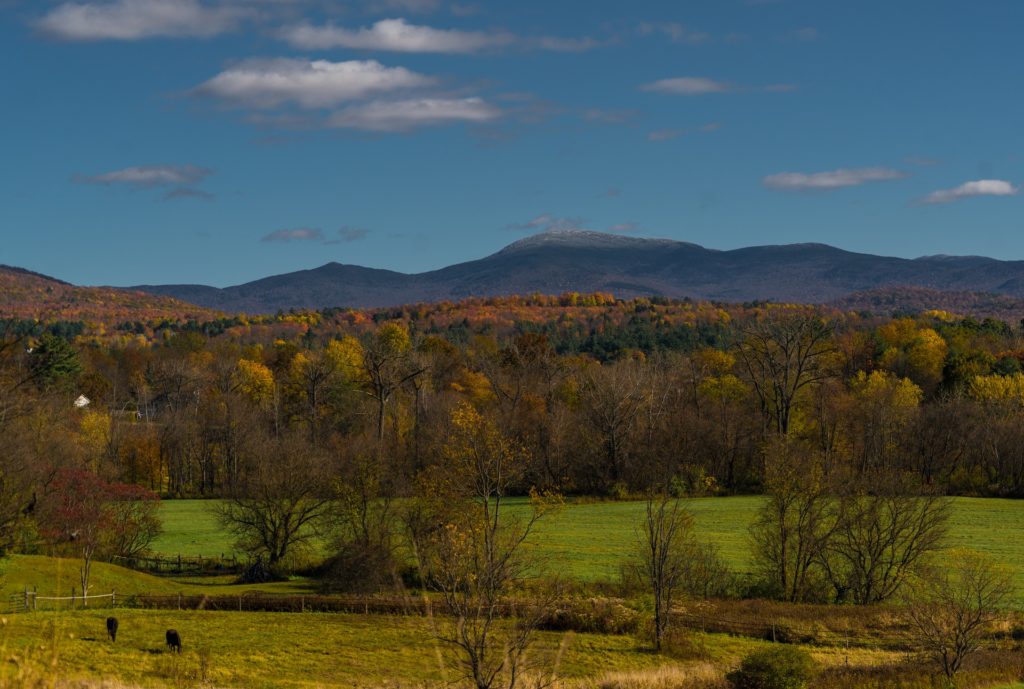History
The Earliest Vermonters
Native Americans, primarily from the Abenaki nation, lived in Vermont for thousands of years. Recent archaeological research shows that there were permanent Paleoindian settlements in many places in Vermont. Ancient Native Americans first came into Vermont hunting big game animals, such as caribou and mastodon, after the last glacier receded. In time, forests grew and the Abenaki learned to hunt smaller animals, gather herbs and berries, and make maple syrup. Today, many place names in Vermont use Abenaki words. For example, Winooski means wild onion place and Ascutney means at the end of the river.
Republic of Vermont
Vermont was an independent republic before joining the Union. Between 1777, when Vermont established its independence, and 1791, Vermont was truly independent – with its own coins and its own postal service. French explorer Samuel de Champlain came to Vermont in 1609 guided by Algonquin Indians from Canada and claimed northern Vermont for France. When the British won the French and Indian War in 1763, the territory became part of what is now New England. The English began to settle the territory, which became known as the New Hampshire Grants, but the territory was also claimed by New York. Many settlers who received land from the New Hampshire government found that other settlers were given the same land from the New York government. In 1775, Ethan Allen formed the Green Mountain Boys to defend the New Hampshire land grants against the New Yorkers. In 1791, fourteen years after declaring independence, Vermont became the 14th state, and the first state to join the Union after the original 13 colonies.
Deerfield Valley
Wilmington was founded in 1751 on land granted by New Hampshire’s provincial governor, Benning Wentworth. The original settlement was on Lisle Hill, northeast of today’s town center. In 1833, town leaders moved it into the valley, which offered better access to the Deerfield River and was closer to the sawmill at the foot of the hill. Ox-drawn carts moved eight buildings, four of which remain today, from Lisle Hill to the valley location. Agriculture and sawmills were the mainstay of the Deerfield Valley’s economy from the late 1700’s to the mid 1800’s. In 1885, the “Hoot, Toot & Whistle” Railroad was completed from western Massachusetts to Readsboro, Vermont. Wilmington town boosters successfully lobbied the company to extend it farther up the valley to their town. Vermont’s ski industry began developing in the late 1940’s, and the Deerfield Valley saw an influx of visitors to nearby ski areas like Haystack Mountain and Mount Snow. Floods and hurricanes have destroyed some buildings, making way for new ones in more modern styles. The area’s resilience and commitment to it’s brightest future continue to define the beautiful and unique Deerfield Valley.
